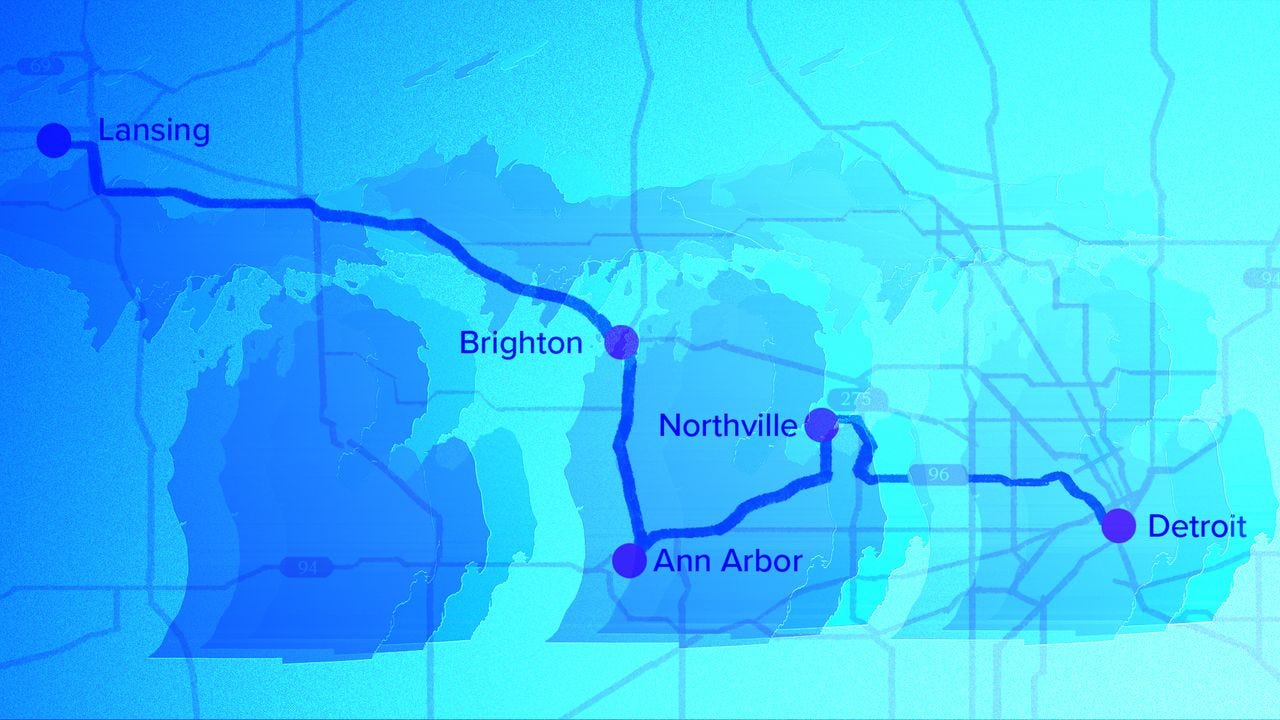How The Blue Wave Happened
Some post-election analysis (and a look back at some pre-election coverage)
In most of America, the story of the midterms was about a red wave that never materialized.
In Michigan, the story was about a blue wave that made history.
For my last big campaign piece, I tried to give readers a sense of what that wave looked and felt like if you were in the middle of it, as I was on Election Day.
I spent the day traveling across the state — hearing first from the voters who were shunning Gretchen Whitmer and the Democrats, later from the voters who embraced the ticket and made them victorious.
It was a political parable of sorts, though I can’t claim to have planned it this way. I was simply engaging in my usual Election Day ritual of interviewing voters from bellwether precincts.
In the past, those interviews have proven surprisingly revealing. In 2004, swing voters at a polling place in Warren, which is part of Macomb County north of Detroit, kept talking about John Kerry’s lies from the war and their worries about gay marriage. In 2016, swing voters at that same precinct talked about Hillary Clinton’s e-mails, while a local Democratic canvasser kept observing, nervously, how many single men were showing up to vote.
In both cases, they were early signs of trouble for the Democrats. But sometimes I found swing voters swinging the other way.
Outside a Toledo, Ohio, polling place in 2012, swing voters kept talking to me about the auto industry — and how Barack Obama had saved it. In 2018, voters in a conservative-leaning part of Michigan told me they were furious Republicans had tried to take away “Obamacare,” and were having second thoughts about Donald Trump’s fitness to serve as president
This year I decided to visit several polling places, partly because I’d covered the Michigan gubernatorial race so closely. Whitmer, the incumbent Democrat, was starting her day with a event for canvassers in Lansing. I figured I’d be there, then make my way to Detroit, where she’d be finishing up at a rally, with some stops along the way.
I improvised a bit, adding an Ann Arbor stop when I heard about the long lines for same-day registration there:

But otherwise I stuck to my itinerary, which took me to Brighton (which sits in a corner of conservative-leaning Livingston County) and Northville (an upscale suburb that has gone from red to blue in the last few years) and finally into Detroit.
It was in Northville I had what was probably my favorite interview of the day. It was with Louise Travis, 89, who was very excited to tell me about her vote for Whitmer.


That interview (more on it in my article) turned out to be a harbinger for the outcome — i.e., a double-digit win for Whitmer that was part of a nearly complete sweep of key races.


It’s tempting to describe the results as stunning. But in reality, the results make sense. The signs were there all along — and on Election Day too. I just had to listen.
I wrote up my observations and reflections in travelogue style. You can read it here:
https://www.huffpost.com/entry/how-gretchen-whitmer-won-michigan_n_636e5e11e4b09d758bd6bbca
If you want to know more about Whitmer, here’s the long profile of her I wrote before Election Day.
I also covered a key U.S. House race here: It was Democratic incumbent Elissa Slotkin’s bid for reelection in a very tough district.
She also won, by the way.
Lastly, I don’t want to claim that I predicted such a big night for the Democrats. Because I didn’t. But I do feel pretty good about this article, which appeared as many analysts were predicting Republicans were on the verge of a rout:
As I said then, if you were looking closely at the polls — or listening to what voters were saying — you were seeing and hearing a different story.
Thank you for reading!




